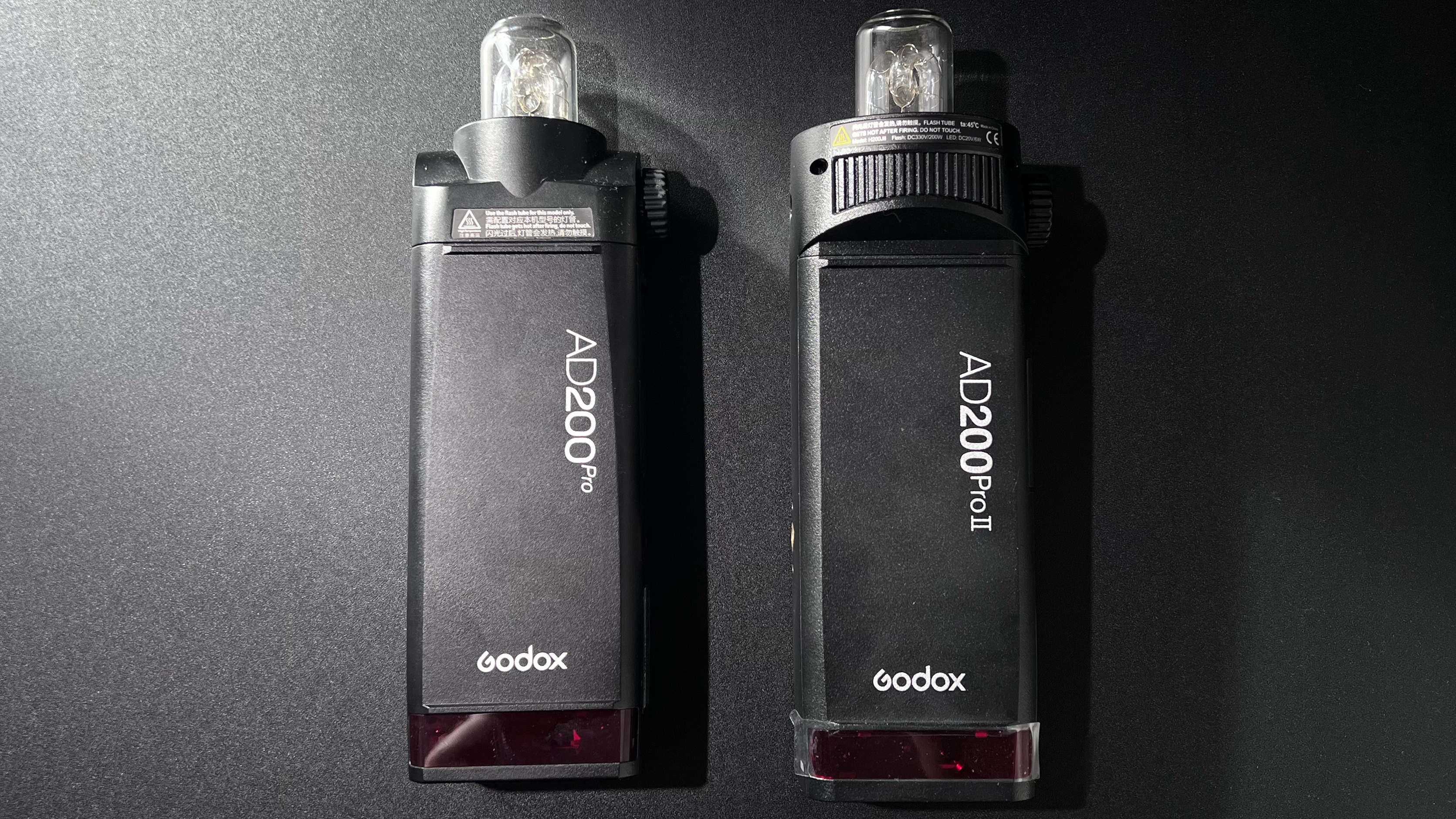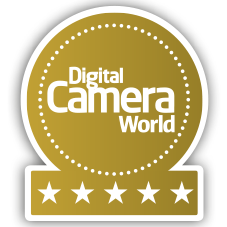Digital Camera World Verdict
The Godox AD200 Pro II is the perfect update to the original and the most welcoming introduction to off-camera flash. The compact and lightweight form factor enables it to be packed away in your kitbag and used when you need extra light, and provides more versatility than an on-camera flashgun.
Pros
- +
Excellent modeling lamp for the size
- +
Price
- +
Dual flash heads
- +
One tap sync with Godox X3 trigger
Cons
- -
Not weather-sealed
Why you can trust Digital Camera World
The Godox AD200 Pro II is an off-camera hybrid light that covers both flashgun and strobe capabilities, by including replaceable heads for bulb and speed light styles it can easily find its way to both the best flashgun and best lighting kit buying guides. This makes it the ideal light for photographers looking to take their first steps from on-camera to off-camera flash.
Godox, alternatively known in some regions as Flashpoint or Wistro, has a great selection of off-camera flash with the AD200 Pro II having the second lowest power output in the range at 200Ws. Godox recently released the Godox AD600 Pro II, the first of the lights to get a second generation update with the AD200 Pro II second, showing its popularity and demand in the series.
Already a favorite lighting range among photographers due to its incredible performance and lower price point, the AD Godox lights are seeing improvement in their ecosystem communication. This is in large thanks to the new Godox X3 trigger. The trigger enables a one-touch connection to all lights, making it incredibly quick and efficient to get set up on a shoot within seconds!
As an early adopter of the original Godox AD200 Pro, I was eager to get my hands on its successor – the AD200 Pro II. The original was a main part of my daily kit as a freelance photographer due to its incredible portability, versatility, and performance, and the new model takes this even further.
Featuring an improved bi-color modeling lamp, a new color screen, and compatibility with the renowned Godox X3 trigger, the Godox AD200 Pro II brings the iconic pocket flash into the modern era of off-camera flash photography, but does it live up to the on-sheet specs?

Godox AD200 Pro II: Specifications
| Power Range | 200Ws |
| Full Power Flashes | 500 |
| Power Control | 10-Stop Range |
| Power Source | Lithium battery (14.4V / 2900mAh) |
| Sync Speed | 1/8000 Sec (High-Speed) |
| Flash Mode | TTL/M/Multi |
| Size | 21.01 x 7.8 x 5.21 cm |
| Weight | 907 g |
Godox AD200 Pro II: Price & Availability
Officially released in October 2024, the AD200 Pro II has been well and truly future-proofed for the new Godox ecosystem. The price of the Godox AD200 Pro II is one of its biggest draws, as it offers incredible value for money coming in at $350 / £350, this is often decreased further by frequent sales events. In the USA, it is sold by Adorama as the Flashpoint eVOLV 200 Pro II for $349.
Not only does the light offer the perfect entryway into off-camera flash, but its low price point in comparison to alternatives on the market means it is even more accessible.
Godox AD200 Pro II: Design & Handling
The Godox AD200 Pro II is small and lightweight enough to facilitate versatile shooting scenarios. Although slightly bigger than its predecessor due to the improved modeling lamp and cooling system, it is still small enough to be packed away in my photographers' kit bags, and the light does come in its own carry case with room for both heads and a battery charger.
A lot of design thought has gone into both the physical construction and the ease of use features of this light, resulting in a robust yet sleek design and efficient performance.

The ability to swap flash head types between speed light and bare bulb enables users to create different light qualities depending on the shooting scenario. The Speedlight acts like most on-camera flashes with a one-directional light beam, whereas the bare bulb facilitates more room for creativity and accessories – more on that in the performance section of the review.
The AD200 Pro ll is equipped with a TFT (thin film transistor) screen, which offers better contrast and clarity, improving visibility and ease of navigation, and making it easier to operate in various lighting conditions.
Group color indicators for multiple light setups are also a much-welcomed addition to the Godox ecosystem, and are made all the more easy to use with the X3 triggers touchscreen features.

The build is robust although not weather sealed so precautions should be taken into account when using outdoors, and as with all lighting equipment, should be sufficiently weighted down when used on a light stand.
Three screw holes enable the light to be positioned on a stand in multiple orientations, increasing the amount of light direction. An umbrella hole is featured on the included bracket allowing for umbrella-based modifiers, and much like the AD200 Pro, the Godox Bowens mount adapter (not included) fits securely enabling compatibility with the entire range of Bowens mount modifiers.


Compared to the original Godox AD200 Pro it is almost identical in size and shape, except for a wider bare bulb head and a slightly longer body. This has been to make room ffor the updated bi-color modeling lamp and the what looks like a new cooling system.


Godox AD200 Pro II: Photo Performance
I have been using the original Godox AD200 Pro for many years and was eager to see how the new updates improved not just performance, as when using lights the light output doesn't tend to change much between models, but for how it improves workflow.
I have to say I was incredibly impressed with how well the Godox AD200 Pro II performed when testing it out. The connection between the trigger attached to my camera and the light was instantaneous. There was no scrolling through groups or channels while syncing, it automatically connected and I was ready to shoot as soon as I powered on – a fantastic start!
Starting with the Speedlight provides a direct flash in a single beam. Due to the small source of light, it created a harsh light on the subject with a stark transition between light and shadow with quite specular quality. Of course, much like a flashgun, pointing it at the ceiling or wall to make the light source larger, will lessen this effect.


The bare bulb flash head facilitated more room for creativity and modification via accessories. used directly with the bare bulb fires a wider spread of light than the controlled nature of the Speedlight head, this can be used for filling a larger area with light but is most commonly utilized with various modifiers.
I used an umbrella and a Bowens-mounted softbox for some test shots. These of course soften the light due to the larger light source and lessen the secular effect of the light. The light itself of course does not change, just the bare bulb facilitates the modifier's effectiveness.
The battery lasted all day and didn't look to be slowing down, and due to it being a removable battery, it enables swapping when power does eventually get low.
The improved modeling light stole the show and enabled me to change intensity and color temperature when prelighting my subject. When shooting in a dimly lit area or studio modeling lamps are vital to catching focus and this one is more than enough to do so although not designed for video.

Godox AD200 Pro II: Verdict

The Gofox AD200Pro II is an incredible light. Godox has packed so much into a small, lightweight, and affordable off-camera flash that it should be a must in all photographer's kit bags. The performance and usability features are much improved in this new model, however, the biggest selling point of the light is the price – it is an absolute steal!
Much like its predecessor, it is the ideal gateway light for taking the first steps into off-camera flash photography, but this time, it's even easier! The power output is more than enough to be a key light even in locations with minimal ambient light, and with the improved modeling lamp, catching focus in low light has been greatly improved.
It is also the perfect fill light, and this is how I use it the majority of the time. Coupled with my Godox AD600 Pro II, I am able to capture a professional two-light setup with minimal effort, but maximum quality.
Alternatives
The Elinchrom ONE is a lightweight strobe light that packs a punch. Similar in size and weight to a 70-200mm lens, the ONE is ideal for photographers who travel.
The Profoto A2 is a portable off-camera flash that is the size and shape of a soda can. Despite its form, it packs a punch and can be utilized both as a key or fill light when faced with low light on location.

Kalum is a professional photographer with over a decade of experience, also working as a photo editor and photography writer. Specializing in photography and art books, Kalum has a keen interest in the stories behind the images and often interviews contemporary photographers to gain insights into their practices. With a deep passion for both contemporary and classic photography, Kalum brings this love of the medium to all aspects of his work.




